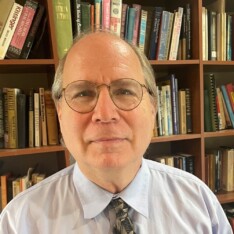Mound Bayou: Guns, Civil Rights, Free Speech and The Emmett Till Murder

Mound Bayou came into the national spotlight following the grisly murder of Emmett Till, a 14-year-old Chicago boy visiting family in Mississippi. The teenager was abducted, mutilated, and slain by two half-brothers, J.W. Milam and Roy Bryant (who after their acquittal admitted their guilt to a journalist). Emmett’s offense was that he had allegedly whistled at, or made “ugly remarks” to, a white woman. Several days after the abduction, his horribly disfigured body was fished out of the Tallahatchie River. Historians generally agree that the outrage generated by the case gave the modern civil rights movement a major jumpstart. This was by no means inevitable. Many such tragedies had previously happened to black Americans and then quickly swept under the rug. A key factor which made the Till case different was the pivotal role played by the citizens of Mound Bayou.
During the trial of Milam and Bryant, Dr. T.R.M. Howard’s Mound Bayou home became a “black command center” for witnesses and journalists. Simeon Booker of Jet characterized Howard’s security arrangements as “a model of dispatch and efficiency.” Strangers passed through a checkpoint, and there were guards around-the-clock. Firearms were ubiquitous, including a pistol strapped to Howard’s waist. One visitor spied a magnum pistol and a .45 at the head of Howard’s bed, a Thompson submachine gun at the foot, and “a long gun, a shotgun or rifle, in every corner of every room.”
During the trial, Howard led a Mound-Bayou based interracial manhunt of sympathetic law enforcement and journalists. When an all-white jury acquitted the killers in September 1955, it did not surprise Howard. He had earlier predicted that “a white man in Mississippi will get no more of a sentence for killing a black person as he would for killing a deer out of season.”
Howard tried to keep the memory of the Till case alive through a national speaking tour. His speeches emphasized the failure to track down crucial leads. In keeping with Howard’s habit of doing everything in a big way, he targeted the FBI, stating, “it’s getting to be a strange thing that the FBI can never seem to work out who is responsible for the killings of Negroes in the South.”
One of the more obscure stops on Howard’s speaking tour about the Emmett Till murder was in Montgomery, Alabama in November, 1955 at an event hosted by a then relatively unknown Martin Luther King Jr. Rosa Parks, who was in the audience, later commented on Howard’s speech. When she refused to give up her seat four days later, she recalled that she was thinking of Till at the time.
Meanwhile, segregationists were using multiple, and often more subtle, ways to quash black resistance. Sheriffs routinely denied African Americans permits to carry concealed weapons, including prominent figures such as Howard. But Howard discovered a way to evade the law. He had a secret compartment in his car to stow his gun if the police pulled him over. Several years later, the Pittsburgh Courier reported that as Howard “rode the highways, he would take the gun from its secret hiding place and put it in his lap…always cocked!”
By the end of 1955 and early 1956, this campaign of white intimidation had rapidly escalated. Howard had to be smuggled out of some meetings in a casket. The pressure started to squeeze Mound Bayou more directly as well. I.F. Edwards, who served as an acting mayor while Green was under care at the VA Hospital in Memphis, called for the town to prohibit meetings of the Regional Council of Negro Leadership as a “race agitating group.” In response, Howard vowed that “no group is going to stop freedom of peaceful assembly in Mississippi.” Under pressure from other town leaders, including Green, Edwards backed off on his proposal.
After a white highway patrolman slapped his wife, Howard finally had enough and moved to Chicago. Despite his absence, his allies, as well as the leaders of the Knights and Daughters of Tabor, continued to quietly promote civil rights although Rev. Kelly Miller Smith Sr., a son of P. M. Smith, the founder of the Taborian Hospital, favored a more radical approach. As a minister in Nashville in the 1960s, self-consciously drawing on his background as a native of a self-governing, black-controlled town, he was a chief instigator of sit-in demonstrations in that city.
Andrew Young, who went on to be a member of Congress and mayor of Atlanta, summarized Mound Bayou’s continued importance during the 1960s to the Civil Rights movement. He recalled that during civil rights protests, the Taborian Hospital extended medical aid to Fannie Lou Hamer and other activists. According to Young, when “we marched in those glory days, flanked by police cordons shielding us from angry crowds, we knew that there was the little hospital at Mound Bayou that would care for us.” For the activists during the 1960s, Mound Bayou still stood out as a refuge, as well as an incubator for pro-freedom ideas, as it had been since the days of Isaiah T. Montgomery and Benjamin T. Green.










